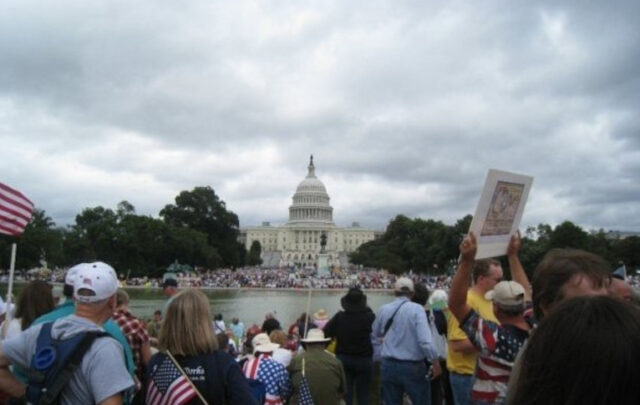It’s been a year since Russian President Putin declared an unprovoked war on Ukraine. Much has changed since then — not just in Russia and Ukraine but worldwide.
The war’s true cost will prove incalculable. How do you cost account the scourge of a sovereign nation of 41 million people by an autocratic leader bent on empire?
The Save the Children campaign estimates that eight million Ukrainians have become refugees since the war began, and six million are internally displaced; just under two million of the eight million have returned. Many of the 14 million will have no homes to return to at war’s end and will likely seek new lives in foreign lands.
Many nations are paying the price of Putin’s war in different ways. For the US and the Western and NATO allied countries, there are the tens of billions of dollars for guns, missiles, tanks, and other implements of war. Let’s not forget the billions for humanitarian and economic aid.
Once the aggressor is defeated, billions more will be needed to rebuild Ukraine’s infrastructure — its cities and towns. Not all payments will be made in cash.
Ukrainian Prime Minister Denys Shmyhal has accused Russia of creating the largest minefield in the world on 250,000 square kilometers of prime agricultural lands. Those who work to clear the thousands of landmines now littering the breadbasket of Europe will add their lives and limbs to the debit column.
Global food security is being exacerbated by a drought in the Horn of Africa and unusually harsh weather in other parts of the world.
According to the Atlantic Council, an American think tank, Ukraine’s fertile fields could feed the world. If only Putin’s war had never started.
According to the OECD, lost agricultural production in Ukraine and Russia due to the war could add anywhere from 19 to 34 percent to the global price of wheat.
“We’re dealing now with a massive food insecurity crisis. It’s the product of a lot of things…including Russia’s aggression against Ukraine.[i].”
Putin’s war is having an immediate and deleterious impact on Earth’s environment. Global coal use in 2022 set an all-time high. Jason Bordoff, cofounding dean of Columbia’s Climate School, suggests “that the energy crisis has given countries like India and China a reason to accelerate their coal plans.”
The rise in coal use is mainly the fault of the war and inflationary pressures that have sent energy prices and utility bills soaring by 70 percent or more. The increased use fossil fuels means higher carbon emissions in the near term.
Most experts predict the immediate increases will be more than offset in the mid and long-term by an escalating deployment of clean energy alternatives like solar and wind. High fossil fuel prices and a desire for domestic energy security have sparked the transition to low-emission energy technologies.
“By attacking Ukraine, the breadbasket of the world, Putin is attacking the world’s poor, spiking global hunger when people are already on the brink of famine[ii].”
An analysis by Ember, a global energy think tank, reports “that wind and solar produced 22 percent of the EU’s electricity over the year, while gas generated 20 percent. The report further shows that the rise in renewable electricity generation helped to avoid €10 billion ($10.89 billion) in gas costs.”
Solar led wind as the go-to technology. According to Forbes, European solar “surged by 24 percent, delivering an additional 39 terawatt hours of electricity over the previous year.” Twenty EU nations have set records for the amount of solar used to meet their energy demands since the invasion began a year ago.
As a response to the war, the EU has announced the RePowerEU — an ambitious plan for achieving two goals: eliminating the need for Russian fossil fuels and having “45 percent of the bloc’s energy come from renewable sources by 2030, up from 22 percent in 2020.”
The UK no longer imports Russian natural gas and has drastically cut its importation of Russian oil and oil products. A parliamentary research brief recently reported that “the UK imported no fossil fuel of any type from Russia for the first time since 2000.”
Putin’s war is hardly the only disruptive force in today’s world. Plaguing populations everywhere is the possibility of new pandemics, while inflation lowers the standard of living of all but the wealthiest. As is often the case, inequity flows down to the poor while wealth bubbles up to the rich.
The world continues to see an increase in the frequency and intensity of costly weather-related disasters attributable to Earth’s warming. While solar and wind have expanded their contributions to Europe’s power demand, hydro has suffered from dry conditions across the continent.
Broken supply chains and inflation are everywhere. Developed and developing nations alike are seeing their economies and quality of life suffering from Earth’s changing weather.
“It’s been a nightmare. Traditional vegetables just don’t grow well in hot weather. They shut down. And on top of that, we’ve had massive inflationary costs[iii].”
Wars and shortages, torrential rains in some places, scorching heat in others, and rising prices are sorely stressing the world’s economies.
There are lessons to be learned from these years of pandemics, armed conflicts, and changes to Earth’s climate. According to Richard Wilding, emeritus professor at Cranfield University (UK), “Supply change strategies “were designed when there were very few ‘black swan’ events, and now we have…a flock of them coming at us.” (Emphasis added)
“Companies are now going to have to procure more for resilience rather than cost. We will be…able to get the stuff but it’s going to cost more.[iv].”
Under the storm clouds of war, inflation, and Earth’s warming, policy-makers worldwide are re-examining what it means to be secure — in times of peace and war.
They’re asking themselves if a nation can ever be truly safe when its computer chips are manufactured elsewhere, its breads are made with foreign grains, and its energy and power needs are met with resources controlled by another nation — let alone by an enemy?
It’s been just over a year since Russia’s president ordered his troops to invade Ukraine. Sadly, there appears to be no prospect of peace on the horizon.
Energy has played a significant part in the war — in terms of world energy prices, supplies, and sources. Clean, domestically available energy alternatives like solar and wind will increasingly become a part of the energy mix of every EU and NATO-aligned nation. Why this will be is straightforward.
The considerable value of clean energy systems to society comes from their safety, security, and sustainability. Without a doubt, solar and batteries are playing a critical role in the military’s defense of the nation. Who could ask more of an investment?
Notwithstanding the recent passage of the Inflation Reduction Act and other climate-related, climate-friendly legislation, America remains divided on energy and environmental matters. I hope those political leaders who accuse alternative energy technology of being “woke” and unreliable will reconsider their positions.
I hope, too, that I’m not trivializing the war by bringing the discussion around to clean energy and climate. Speeding the transition to more secure and sustainable energy is a positive thing. It’s horrifyingly sad that it’s taking a war of naked aggression to show it.
A note to readers:
Please, give what you can to support the people of Ukraine. Contribute to CARE, Save the Children, the Red Cross and Red Crescent, your church fund, or any of a dozen more relief agencies.
Image credit: Public domain photo by Ukrinform courtesy of Depositphotos
[i] US Secretary of State Anthony Blinken
[ii] Samantha Power, the administrator of the United States Agency for International Development, or USAID.
[iii] Guy Poskitt, a UK farmer.
[iv] Richard Wilding






